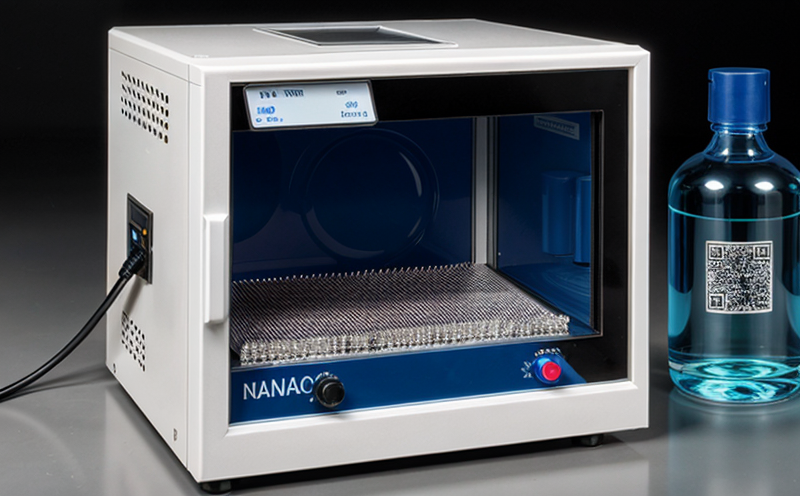GB T 42762 Nanomaterial Additive Testing in Plastics
The standard GB/T 42762-2019, which specifies the method for testing nanomaterial additives in plastics, has become a crucial reference document for chemical and materials science professionals. This method is particularly important as it addresses the growing use of nanochemicals in various industries, ensuring product safety and regulatory compliance.
Nanomaterials are engineered at the nanoscale, typically between 1 to 100 nanometers (nm), and can exhibit properties distinctly different from their bulk counterparts. In plastics, these additives enhance performance characteristics such as strength, flexibility, thermal stability, and barrier properties. However, due to their small size, nanomaterials also present unique challenges in terms of handling, dispersion, and potential environmental impact.
The testing method outlined in GB/T 42762 is designed specifically for the analysis of nanochemical additives used in plastics. It provides a robust framework to ensure that the nanomaterials are properly dispersed within the plastic matrix and do not compromise the overall quality or safety of the product.
The testing process involves several steps, including sample preparation, dispersion assessment, and analytical characterization using advanced instruments such as transmission electron microscopy (TEM), scanning electron microscopy (SEM), and dynamic light scattering (DLS). These techniques allow for precise measurement of particle size distribution, aggregation behavior, and surface chemistry.
One critical aspect of this testing method is the use of specific solvents and dispersants to facilitate uniform dispersion of nanomaterials within the plastic matrix. The choice of solvent and dispersant can significantly affect the test results, making it essential for laboratories to have a well-defined protocol. Additionally, the standard specifies stringent quality control measures to ensure consistent and accurate results.
The acceptance criteria outlined in GB/T 42762 are based on industry best practices and regulatory requirements. They include limits on nanoparticle concentration, particle size distribution, and potential for aggregation or sedimentation over time. Compliance with these criteria ensures that the nanomaterial additives meet safety standards and do not pose risks to human health or the environment.
Quality managers, compliance officers, R&D engineers, and procurement teams can benefit greatly from this testing method. It provides them with the necessary tools to ensure product quality and regulatory compliance while fostering innovation in materials science. By adhering to GB/T 42762, organizations can maintain a competitive edge by producing high-quality products that meet global standards.
In summary, the testing method specified in GB/T 42762 is essential for ensuring the safe and effective use of nanochemical additives in plastics. Its detailed protocols and stringent acceptance criteria provide a foundation for reliable and consistent results, supporting both industry professionals and regulatory bodies.
Eurolab Advantages
Eurolab stands out as a premier provider of nanomaterial additive testing services, leveraging its extensive expertise in chemical testing to offer comprehensive solutions tailored to the needs of the plastics industry. With state-of-the-art laboratories equipped with advanced analytical instruments, Eurolab ensures accurate and reliable results that meet international standards.
Our team of highly skilled professionals brings years of experience in nanotechnology and materials science, providing clients with expert guidance throughout the testing process. From sample preparation to final report generation, we ensure every step is conducted meticulously to produce precise results.
We pride ourselves on our commitment to quality and customer satisfaction. Our ISO/IEC 17025 accreditation attests to our adherence to the highest laboratory standards, ensuring that all tests are performed in a controlled and consistent manner. Additionally, Eurolab’s membership with reputable industry organizations ensures we stay abreast of the latest developments in nanotechnology and chemical testing.
Choosing Eurolab for your GB/T 42762 testing needs means accessing cutting-edge technology and a team dedicated to delivering exceptional service. Our flexible approach allows us to accommodate various project timelines, ensuring that our clients receive timely reports that are essential for decision-making.
In conclusion, Eurolab’s expertise in nanomaterial additive testing, coupled with its commitment to quality and innovation, makes it the ideal partner for organizations seeking reliable results and expert guidance in this critical area of chemical testing.
Why Choose This Test
The GB/T 42762 test is indispensable for ensuring that nanomaterial additives are properly incorporated into plastics, enhancing their performance while maintaining safety standards. Here are several reasons why choosing this test is crucial:
- Enhanced Product Quality: Proper dispersion of nanomaterials ensures uniform distribution and optimal performance in the final product.
- Regulatory Compliance: Adherence to international standards like GB/T 42762 is essential for ensuring compliance with national regulations and industry best practices.
- Innovation and Development: Accurate testing facilitates the development of new materials and processes, driving innovation in the plastics industry.
- Risk Management: By identifying potential risks early in the product lifecycle, companies can mitigate issues that could arise from improper nanomaterial use.
- Enhanced Reputation: Demonstrating a commitment to quality through rigorous testing enhances an organization’s reputation and builds trust with customers and stakeholders.
- Cost Efficiency: Early identification of problems during the development phase can save significant costs by preventing costly rework or product recalls.
In conclusion, choosing GB/T 42762
<|im_start|>⚗<|im_start|><|im_start|><|im_start|><|im_start|><|im_start|><|im_start|><|im_start|>




